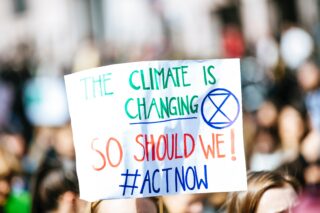Individual cities around the world are also striving to become climate neutral. According to the CDP, of the more than 570 cities worldwide for which statistics are kept, more than 100 get at least 70% of their electricity from renewable sources – water power, geothermal, solar and wind power.
The list includes such cities as Oakland, Nairobi, Oslo, Seattle, Vancouver, Reykjavik, Porto, Basel, Bogota, and others.
For example, Burlington (Vermont, USA) already gets 100% of its electricity from wind, solar, water, and biomass. All of Reykjavik’s electricity is generated by hydroelectric power plants and geothermal sources. By 2040, all public and private transport in the capital should be free of fossil fuels.
100% of the energy from renewable sources for Switzerland’s Basel is provided by its own power supply company. Most of the electricity comes from hydropower and 10% from wind. In May 2017, Switzerland voted to phase out nuclear power in favor of renewables.
The world’s capitals are not left out either. The Berlin Senate, for example, approved the German capital’s Masterplan Solarcity plan for solar energy development. According to the city’s overall development strategy, Berlin is to become climate neutral by 2050. At the end of 2018, Berlin had solar power plants that covered 0.7 percent of its electricity consumption; by 2050, 25 percent of the city’s energy consumption will come from solar power.
“We are promoting the expansion of renewable energy in Berlin. Two bills are now pending in the capital’s Senate. The Solar Energy Act would require private homeowners to install solar systems on their roofs. A bill from the Environment and Climate Administration would make the use of solar energy in public buildings mandatory as early as 2023. This will drastically reduce Berlin’s CO2 emissions,” said Silke Goebel, head of the Green Party in the Berlin Senate.
How businesses create a positive image by investing in renewables
Companies around the world are also creating strategies and green goals that they want to achieve over a period of time. Awareness has emerged: it is necessary to act responsibly and set a green example for consumers. Of course, the use of RES can not only help to create a positive image for companies, but also reduce energy costs.
For example, Facebook’s new servers, as well as General Motors, will be powered by a solar power plant. It’s being built in Kentucky as part of a massive Green Invest program.
IKEA has planned to produce more renewable electricity than it consumes by 2030. There are 920,000 solar panels on stores in 14 countries, as well as more than 530 wind turbines. Ingka, IKEA’s parent company, has invested about $2.8 billion in various renewable energy projects and owns 1.7 GW of capacity. It will also continue to invest in the construction of wind farms and solar power plants.
BASF, a chemical company, will gradually switch to renewable energy sources and also plans to invest in wind farms.
Intel gets its energy from wind, solar, water, and biomass. Since 2012, Intel has invested $185 million in 2,000 energy-saving projects, and 100% of the electricity the corporation consumes in the U.S. and EU comes from renewables.
Apple is also aiming to become carbon neutral. It has purchased several solar farms, providing sustainable energy for its data centers. As of 2018, all of Apple’s retail stores, offices and data centers are powered by 100 percent renewable energy.
Microsoft uses more than 1.3 billion kWh of green energy annually in software development, data center operations, and manufacturing. The company has pledged to reduce its carbon emissions by 75% by 2030.


